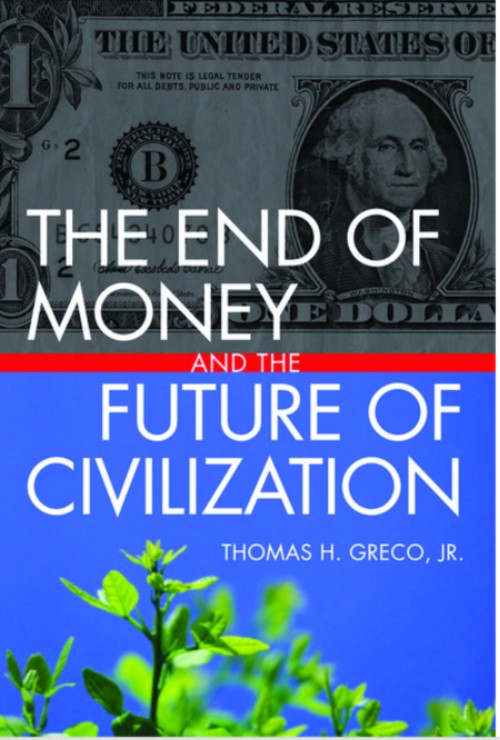




POSITIVE MONEY
TAKEN FOR A RIDE: The conspiracy to Kill the electric Streetcar film.
by Rafael Zambrana March 30, 2014
by Rafael Zambrana March 30, 2014
Recent Articles



Courtesy of the Venus Project


Because our mind functions as a pattern-recognizing machine, it readily adopts those patterns it discovers as the "truth", and establish them as the narrative that is taken as the established "reality".
We're then left with the often wrong impression that the way things are, is the natural and logical result of events. However what this assumption may hide is that so much we take for granted as being the "facts of life", is often the result of deliberate actions by those individuals who end up benefiting from these actions, and our purchasing power being spent in one place and not another.
It's important to recognize wealth is created by the producers of consumer goods in what economist call the "Real Economy" and all those other services related to this activity, like transportation. Therefore by convincing workers to use one mode of transportation instead of another, can direct the flow of cash towards those who found a way to take the competition out of their consumer choices.
The film TAKEN FOR A RIDE deals with one of these instances that have brought so much environmental destruction to the whole world, and so much wealth to so few.
SYNOPSIS
In the mid-1930s, GM worked hard to create the impression of a nationwide trend away from rail. But there was no trend. Buses were a tough sell. They jolted. They smelled. They inched through traffic. City by city, it took the hidden hand of General Motors to replace streetcars with Yellow Coach buses.
In 1936, a company was founded that would grow to dominate American city transportation. National City Lines had no visible connection to General Motors. In fact, the director of operations came from a GM subsidiary, Yellow Coach, and members of the Board of Directors came from Greyhound, which was founded and controlled by General Motors. The money to start this new company also came from Greyhound and Yellow Coach.
To hide these connections the company needed a front man. Roy Fitzgerald got his start in Northern Minnesota where he hauled miners and school children in a couple of buses. General Motors would groom him to become president of National City Lines.
Over the next few years, Standard Oil of California, Mack Truck, Phillips Petroleum and Firestone Tire would join GM in backing this venture.
We're then left with the often wrong impression that the way things are, is the natural and logical result of events. However what this assumption may hide is that so much we take for granted as being the "facts of life", is often the result of deliberate actions by those individuals who end up benefiting from these actions, and our purchasing power being spent in one place and not another.
It's important to recognize wealth is created by the producers of consumer goods in what economist call the "Real Economy" and all those other services related to this activity, like transportation. Therefore by convincing workers to use one mode of transportation instead of another, can direct the flow of cash towards those who found a way to take the competition out of their consumer choices.
The film TAKEN FOR A RIDE deals with one of these instances that have brought so much environmental destruction to the whole world, and so much wealth to so few.
SYNOPSIS
In the mid-1930s, GM worked hard to create the impression of a nationwide trend away from rail. But there was no trend. Buses were a tough sell. They jolted. They smelled. They inched through traffic. City by city, it took the hidden hand of General Motors to replace streetcars with Yellow Coach buses.
In 1936, a company was founded that would grow to dominate American city transportation. National City Lines had no visible connection to General Motors. In fact, the director of operations came from a GM subsidiary, Yellow Coach, and members of the Board of Directors came from Greyhound, which was founded and controlled by General Motors. The money to start this new company also came from Greyhound and Yellow Coach.
To hide these connections the company needed a front man. Roy Fitzgerald got his start in Northern Minnesota where he hauled miners and school children in a couple of buses. General Motors would groom him to become president of National City Lines.
Over the next few years, Standard Oil of California, Mack Truck, Phillips Petroleum and Firestone Tire would join GM in backing this venture.
TAKEN FOR A RIDE
The Conspiracy to Kill the electric Streetcar
The Conspiracy to Kill the electric Streetcar


A related case is the unexpected death of Rudolph Diesel, the engineer who designed the Diesel engine to consume Vegetable Oil not petroleum.
In the evening of September 29, 1913, Diesel boarded the post office steamer Dresden in Antwerp on his way to a meeting of the Consolidated Diesel Manufacturing company in London. He took dinner on board the ship and then retired to his cabin at about 10 p.m., leaving word to be called the next morning at 6:15 a.m. His cabin was found empty during a roll call, and he was never seen alive again.
A search of his cabin revealed that Diesel's bed had not been slept in, although his nightshirt was neatly laid out and his watch had been left where he could see it from the bed. His hat and overcoat were discovered neatly folded beneath the afterdeck railing.
Ten days later, the crew of the Dutch boat Coertsen came upon the corpse of a man floating in the ocean of the North Sea near Norway. The body was in such an advanced state of decomposition that it was unrecognizable, and they did not bring it aboard. Instead, the crew retrieved personal items (pill case, wallet, I.D. card, pocket knife, eyeglass case) from the clothing of the dead man, and returned the body to the sea. On October 13, these items were identified by Rudolf's son, Eugen Diesel, as belonging to his father.
In the evening of September 29, 1913, Diesel boarded the post office steamer Dresden in Antwerp on his way to a meeting of the Consolidated Diesel Manufacturing company in London. He took dinner on board the ship and then retired to his cabin at about 10 p.m., leaving word to be called the next morning at 6:15 a.m. His cabin was found empty during a roll call, and he was never seen alive again.
A search of his cabin revealed that Diesel's bed had not been slept in, although his nightshirt was neatly laid out and his watch had been left where he could see it from the bed. His hat and overcoat were discovered neatly folded beneath the afterdeck railing.
Ten days later, the crew of the Dutch boat Coertsen came upon the corpse of a man floating in the ocean of the North Sea near Norway. The body was in such an advanced state of decomposition that it was unrecognizable, and they did not bring it aboard. Instead, the crew retrieved personal items (pill case, wallet, I.D. card, pocket knife, eyeglass case) from the clothing of the dead man, and returned the body to the sea. On October 13, these items were identified by Rudolf's son, Eugen Diesel, as belonging to his father.